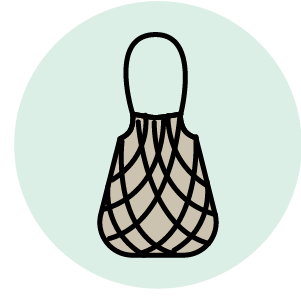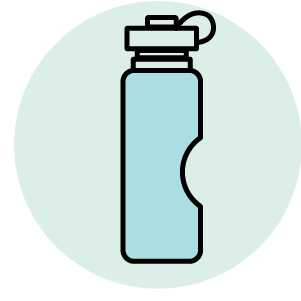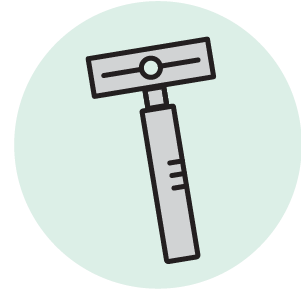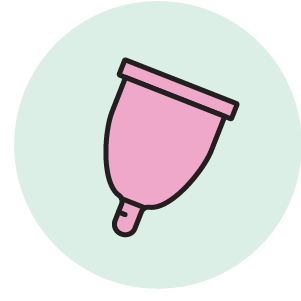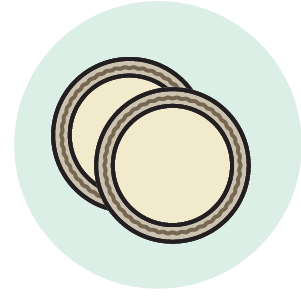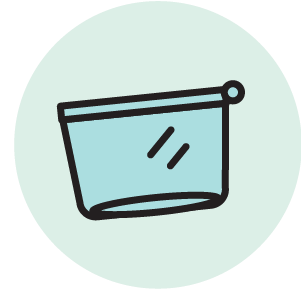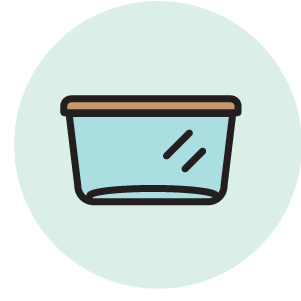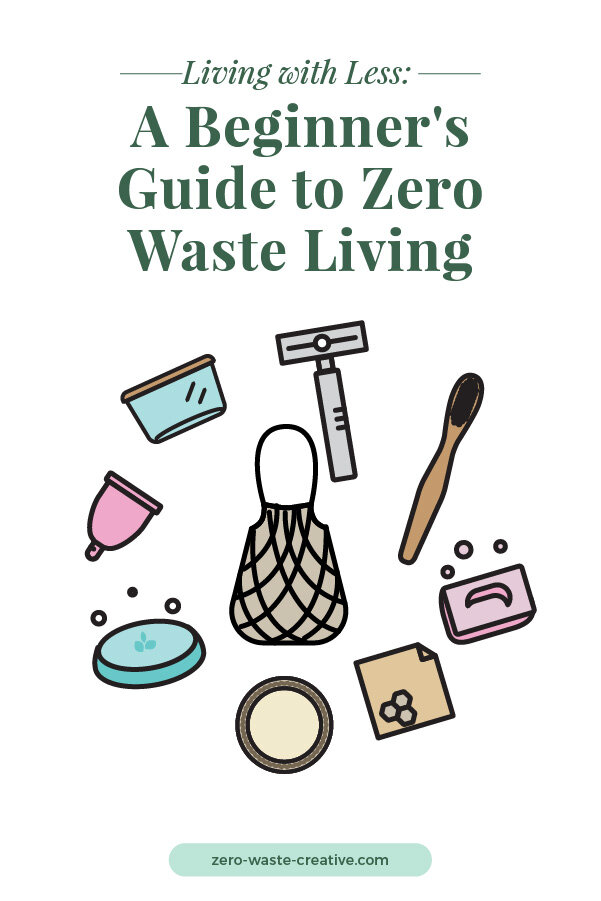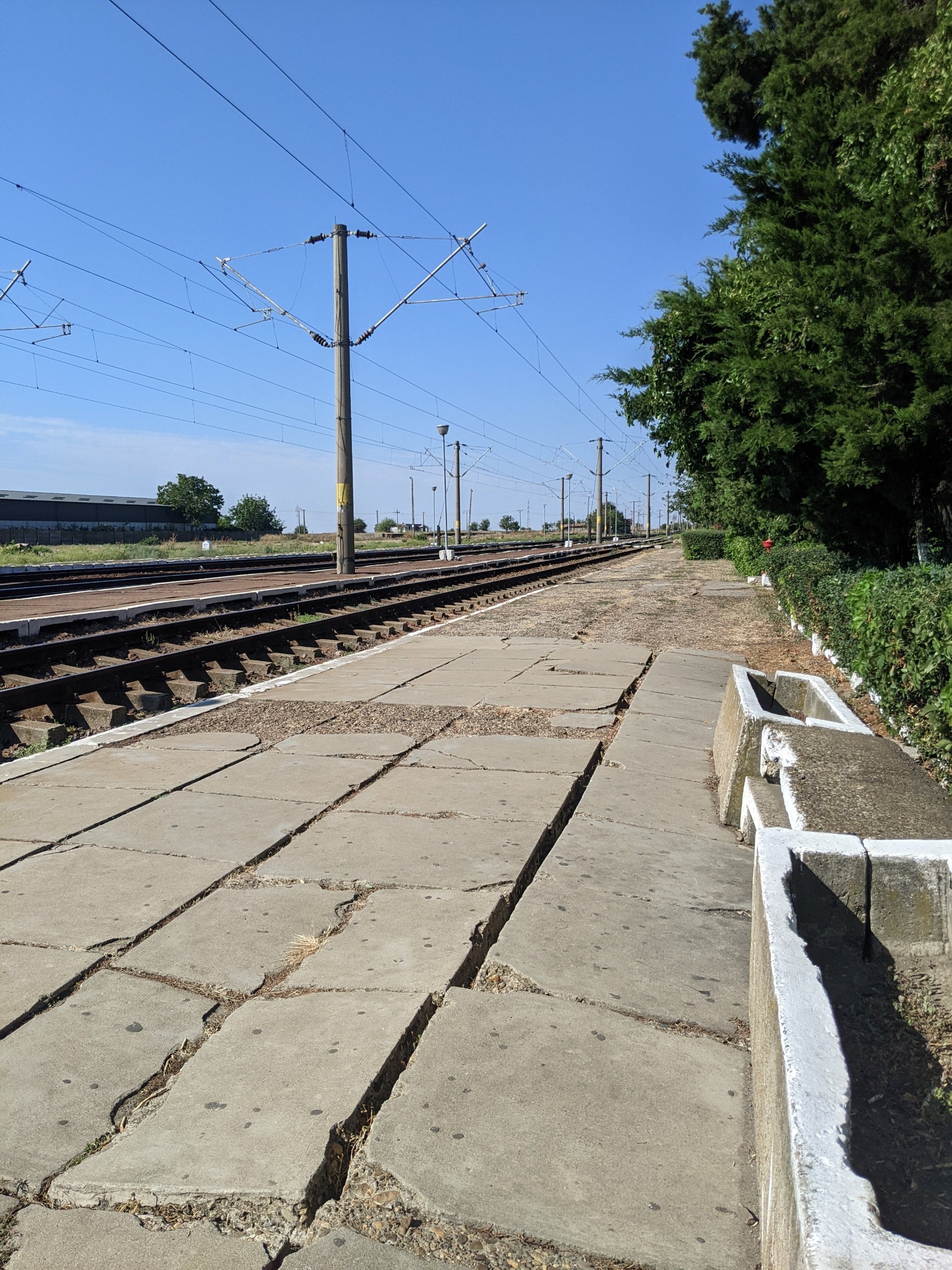INFOGRAPHIC - Living with Less: A Beginner's Guide to Zero-Waste Living
You can start your journey by using only what you already have and reducing your consumerism. It isn’t the easiest choice but it is definitely a rewarding journey.
For starters you will need to know the 5 R’s of waste management: Refuse, Reduce, Reuse, Recycle, and Rot.
REFUSE what you don’t need, REDUCE what you do need, REUSE what you already have, RECYCLE what you can, ROT the what can be rot.
Share this Image On Your Site
In this blog post, I am mostly focusing on REFUSE. I bet you already wonder “Why the heck do I have things?!” or declare “ I have no space for my stuff!”.
Refusing things is a challenge for many of us, including me. Our tendency is to value quantity and start small by refusing flyers, turn down freebies and stuff that you have a history of not using.
FUN FACT!
Here are twelve easy tips to help you start living with less today.
How to Live with Less [For Beginners]
1. Bring your reusable bags
Not just for grocery shopping - when shopping in general. Keep a compact one in your purse, car, work bag, and basically, anywhere else you can fit one! There is nothing worse than having to purchase yet another reusable tote bad because you weren’t prepared.
After Prince Edward Island banned single-use plastic bags, the waste of 30 to 40 million bags a year was reduced to almost nothing. [Source]
Another tip is to invest in mesh bags for your produce. They last forever and can be thrown in with the wash when necessary. Local small businesses in your area likely sell some variation of 100% organic cotton produce bags - get in touch with your area’s sustainability network to find out where you can ethically buy them near you.
If you like buying in bulk, I suggest using mason jars (maybe not now in the pandemic). Bulk Barn offers a discount for those who use their own containers and glass is my go-to. It saves you time and effort at home after shopping too since all of your products are ready to be stored.
Get into the habit of being prepared and always carrying bags and jars with you - it’s worth it!
Fun fact: Americans use 100 billion plastic bags/year
2. Get a reusable coffee mug and water bottle
Every time you bring your coffee cup to a store, you save money and the environment. How great is that? Many coffee shops have incentives for using your own cup too so be sure to ask.
(note: this could be affected by the current COVID-19 restrictions in your area. Check with your local coffee shop prior if you aren’t sure)
Plastic water bottles have been known to be terrible for some time now, but it is still an important change to make note of! The production of plastic water bottles requires up to 17 million barrels of oil each year.
It is approximated that 46,000 pieces of plastic trash are floating on the ocean per square mile. This plastic is killing animals, leaking chemicals, and disrupting ecosystems.
Most of us buy water and coffee every day. What does it take to carry two bottles with you when you leave the house in the morning?
Fun fact: 16 billion disposable coffee cups are used each year.
3. Use Safety razors
Oh man, razors are expensive, especially if they are pink…or purple - you know, the plastic, disposable kind.
How much do you spend on razors a year?
I say, invest in one good razor. A quality razor with changeable blades or an electric unit. Search around for a sustainable option that will last you years.
Pro tip: for winter just use a trimmer. Nobody cares about shaving their legs in the winter unless you are wearing dresses and no tights.
Fun fact: 2 billion razors and refill blades get tossed out in the U.S. each year.
4. Use a menstrual cup. Say goodbye to tampons and pads
I tried tampons, pads, and reusable pads BUT didn’t love them. Then I discovered the menstrual cup and the period panties. This small, flexible cup is made of silicone or latex rubber. Instead of absorbing your flow, like a tampon or pad, it catches and collects it.
At $30-$40, it’s affordable and can last up to 10 years. That means less waste in landfills and less money over time. And did I mention that you can use it for up to 8 hours? That’s a whole day at work.
5. Switch to dry bar shampoo and conditioner. Soap bars too.
Thankfully, there are now a ton of different options out there for all different hair types. I found a really good dry shampoo bar that I simply love that works for me.
A shampoo bottle lasted approximately 15-20 washes for me but this shampoo bar seems to last forever! Refillable bottle stations and dissolvable product tabs are also great options. Check out your local sustainability groups to see what options are available in your area.
Bonus points if you choose to try out some from small businesses!
Fun fact: 552 million shampoo bottles could be ending up in landfills every year.
6. Swap your toothbrush to a bamboo toothbrush
Alright, you might expect I will suggest the bamboo toothbrush but I’m actually happy with my electric toothbrush! It gets the job done and has lasted for years. Changeable head toothbrushes are an easy switch and save on plastic consumption, unlike their wasteful disposable brush counterparts. I will probably change the electric toothbrush when dies but until then, remember to use what you already have. That’s what I am doing.
Fun fact: OVER A BILLION TOOTHBRUSHES END UP IN LANDFILLS EVERY YEAR IN NORTH AMERICA!
7. Choose Silicone Baking Mats
This has been a game-changer in the kitchen. Say goodbye to regularly cycling through roll after roll of parchment paper. Silicone baking mats are the perfect zero waste solution for your cooking and baking needs. I even use mine under my food prep station to make cleaning up easier.
These are available for purchase at any kitchen store now. Be sure to check the silicone’s heat limit before turning on the oven!
Fun fact: the majority of parchment paper manufactured today is coated with silicone to give it nonstick properties. As with other coated forms of paper, this makes it difficult to recycle since the components can’t be easily separated.
8. Switch to Bamboo Rounds
The best next step you can take to a zero-waste beauty routine is to replace your disposable cotton pads with reusable bamboo pads. While cotton is great because it can be composted, growing, and farming it is not eco-friendly. It takes a LOT of water to grow and farm cotton while bamboo takes one-third the amount of water.
Fun fact: Bamboo requires one-third the amount of water to grow than is necessary for cotton
9. Laundry Detergent
Switch to an eco-friendly detergent that has less packaging, lasts longer and saves you money. Check out your local options for laundry sheet tabs or try out a natural laundry recipe - which can be found on my “DIY Sustainable Living” Pinterest Board.
Most of the time, there are local businesses that are making laundry soap and sometimes it even comes in recyclable or compostable packaging. Check your local businesses.
Fun Fact: Detergent can contain harmful chemicals and produces a lot of plastic
10. Use less paper
As we enter into the digital era there are a million alternatives to traditional paper use. A tablet is a great investment for long-term paper savings. It can be your source for books, notebooks, journals, sketches, calendars, and to-do lists. You can support digital creators (like me!) by purchasing digital icons, templates, and journals to personalize your paper-free resources.
Pro Tips: Get a bidet. Bring your resume or portfolio on a tablet as opposed to a “hard copy” when job hunting. This will display your commitment to sustainability to your future employer and save on waste!
Fun fact: Investing in a bidet seat or bidet attachment can reduce toilet paper use by 75% or more.
11. Bring your own food to work
We have all had days where we need to rush out the door and don’t have time to grab lunch from home. While a nice lunch out from time to time to support a local restaurant is great, getting in the habit of preparing meals in advance will help you save on money, waste and encourage you to be conscious of your food’s nutritional quality! Quality reusable containers and utensils are a great investment; while they cost more initially, you will save money from all the plastic baggies and cheap containers breaking in the long run. You can also swap food wrap for reusable sustainable beeswax.
12. Switch up kitchen storage and use what you already have
The average household produces more than 200 pounds of kitchen waste a YEAR! There is a lot of waste that can be avoided by planning ahead and being equipped with the proper tools. This can be a whole blog post in itself but for now, I will leave you with a tip on how to start. Switch over your kitchen to sustainable storage. Whether your choice is glass, ceramic, or silicone these long-lasting storage materials will stand the test of time and encourage you to get into the habit of reusing.
Remember, transitioning your home into a more eco-friendly environment is a marathon, not a sprint. It will take time to adjust but starting with small changes like those listed above will help you be mindful of your product consumption and purchasing habits.
I wish you the best of luck with the start of your sustainability journey!
- Claudia
Feel free to share this article on Pinterest.


